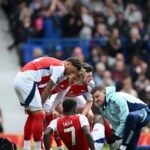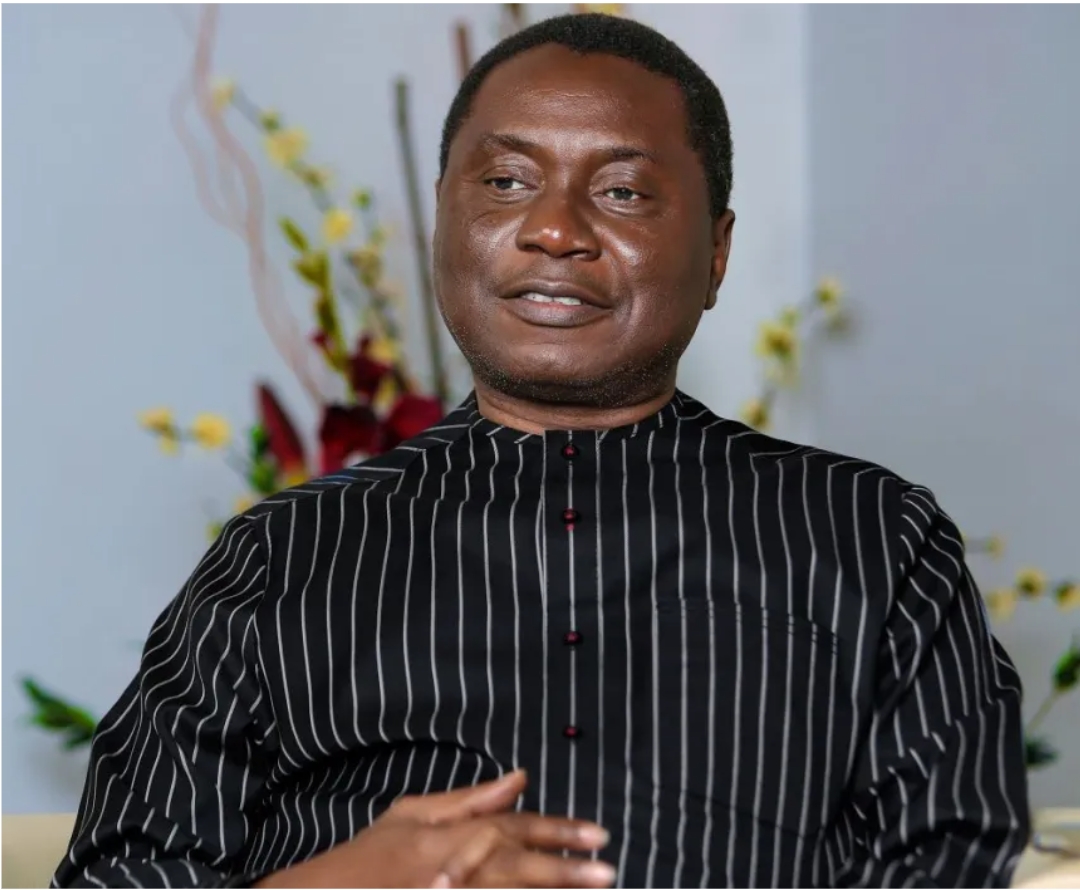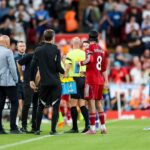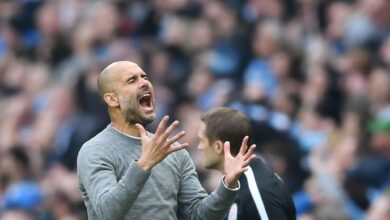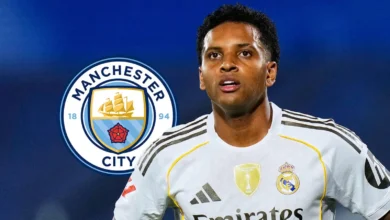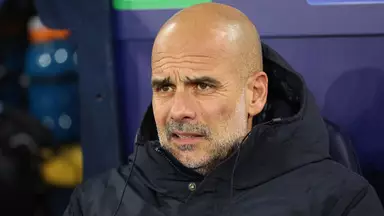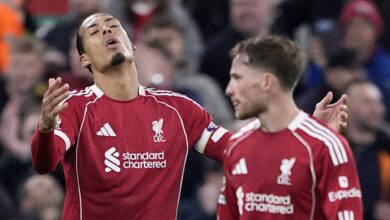Arsenal’s Bukayo Saka Injury Concerns: A Comprehensive Analysis Following Tottenham Defeat

The football world was given cause for concern on Thursday evening as Arsenal’s star winger Bukayo Saka was forced off the pitch with an apparent injury during the Gunners’ 1-0 pre-season defeat to North London rivals Tottenham Hotspur. The incident, which occurred during the second half of the friendly match at Hong Kong’s Kai Tak Sports Park, has sent ripples of anxiety through the Arsenal fanbase and raised questions about the England international’s fitness ahead of the rapidly approaching new Premier League season.
Saka’s injury represents more than just a temporary setback for Arsenal; it highlights the delicate balance clubs must strike during pre-season preparations between match fitness and player welfare. As one of Arsenal’s most crucial players and a cornerstone of Mikel Arteta’s tactical system, any extended absence for the 22-year-old could significantly impact the club’s ambitions for the upcoming campaign.
The injury occurred during what was already proving to be a frustrating afternoon for Arsenal in their pre-season clash against Tottenham. Trailing 1-0 to Pape Matar Sarr’s spectacular long-range effort that caught goalkeeper David Raya off his line just before half-time, the Gunners were pushing for an equalizer when disaster struck.
In the second half, Saka found himself on the receiving end of a challenge from Bayern Munich loanee Mathys Tel, who was representing Tottenham in the friendly fixture. The exact nature of the challenge remains unclear from initial reports, but it was significant enough to require immediate medical attention on the pitch. Arsenal’s medical staff quickly assessed the situation, with Saka receiving treatment before attempting to continue playing
However, it soon became apparent that the young winger was struggling with discomfort, and the decision was made to substitute him in the 77th minute. Max Dowman, one of Arsenal’s promising academy graduates, was brought on to replace Saka, marking what should have been a proud moment for the youngster but was overshadowed by concerns over the senior player’s wellbeing.
The severity of the situation became more apparent after the final whistle when television cameras captured Saka noticeably limping as he made his way off the pitch alongside his teammates. The image of one of Arsenal’s brightest stars struggling to walk normally will undoubtedly have sent alarm bells ringing among supporters and club officials alike
Following the match, Arsenal manager Mikel Arteta was characteristically measured in his response to questions about Saka’s injury. Rather than providing specific details about the nature or severity of the problem, the Spanish tactician chose to emphasize the club’s cautious approach to player welfare during the pre-season period.
“We will not be taking risks with any player ahead of our friendly against Villarreal,” Arteta stated in his post-match press conference. This philosophy reflects a broader understanding within modern football about the importance of prioritizing long-term player health over short-term competitive advantages, particularly during exhibition matches.
Arteta’s reluctance to provide immediate updates on Saka’s condition is also indicative of Arsenal’s professional approach to injury management. In an era where social media speculation can quickly spiral out of control, the club appears determined to ensure that any information released about player injuries is accurate and comes through official channels after proper medical assessment.
The manager’s comments also highlighted Arsenal’s upcoming fixture schedule, with a friendly against Spanish side Villarreal scheduled for Wednesday at the Emirates Stadium. This match will serve as another important preparation opportunity before the Premier League season begins, but Arteta’s emphasis on not taking risks suggests that several players, potentially including Saka, may be rested as a precautionary measure.
Saka’s injury was not an isolated incident during Arsenal’s defeat to Tottenham, highlighting what appears to be a concerning pattern of physical problems during the club’s pre-season preparations. Leandro Trossard, who had been introduced as a second-half substitute, was also forced off the pitch with just five minutes remaining after experiencing what Arteta described as “a little tweak.
The Belgian winger’s injury occurred when he attempted to turn with the ball but felt something in his muscle after being pushed by an opponent. “He tried to turn and he was pushed and he felt something muscular, so we will have to assess him,” Arteta explained, adding another name to Arsenal’s growing injury list.
These incidents come on top of an already lengthy list of players who missed the Hong Kong friendly due to various fitness concerns. Gabriel Magalhães, Arsenal’s Brazilian center-back and defensive stalwart, was absent from the squad, as were new signing Riccardo Calafiori, versatile defender Jurrien Timber, and goalkeeper Kepa Arrizabalaga. The absence of these key players raises questions about Arsenal’s injury management and whether the intensity of their pre-season program might be contributing to these physical problems. However, it’s worth noting that pre-season injuries are unfortunately common across all levels of football as players’ bodies readjust to competitive intensity after their summer break.
The most significant concern undoubtedly surrounds Bukayo Saka, whose importance to Arsenal’s tactical system cannot be overstated. The England international has been one of the Premier League’s most consistent performers over the past two seasons, contributing goals, assists, and creative spark from his position on the right wing. His ability to drift inside, create chances for teammates, and pose a constant threat in the final third makes him irreplaceable in Arteta’s setup.
Saka’s injury history, while not extensive for a player of his age, includes some concerning patterns. He has occasionally struggled with minor knocks and fatigue-related issues, partly due to his heavy workload for both club and country. Any extended absence would force Arsenal to rely more heavily on alternative options such as Gabriel Martinelli, who could switch flanks, or academy prospects like Ethan Nwaneri. The muscular problem experienced by Leandro Trossard adds another layer of complexity to Arsenal’s pre-season preparations. The Belgian has established himself as a crucial squad player since his arrival from Brighton, offering versatility across multiple attacking positions and providing healthy competition for places in the starting XI.
Trossard’s injury appears to be muscular in nature, which often requires careful management to prevent more serious complications. Such injuries can be particularly troublesome during the early stages of a season when fixture congestion begins to build and squad depth becomes crucial.
The absence of Gabriel Magalhães from the Tottenham fixture represents a significant blow to Arsenal’s defensive preparations. The Brazilian has formed an excellent partnership with William Saliba at the heart of Arsenal’s defense, and his aerial ability, leadership qualities, and distribution from the back make him fundamental to the team’s playing style.
However, Arteta’s comments suggest that Gabriel’s absence may be more precautionary than serious. The manager indicated that if the defender continues to progress as he has been, he should be available for Arsenal’s Premier League opener against Manchester United on August 17.
The new signing from Bologna represents an exciting addition to Arsenal’s defensive options, but his absence from the Hong Kong friendly due to injury concerns is far from ideal from an integration perspective. Calafiori needs time to adapt to Arsenal’s tactical system, build relationships with his new teammates, and adjust to the physicality of English football.
Missing pre-season matches due to injury can significantly impact a new player’s bedding-in process, potentially delaying their introduction to competitive action. However, like Gabriel, Arteta expressed confidence that Calafiori would be available for the season opener if his recovery continues on its current trajectory.
The Dutch defender’s absence is particularly concerning given his injury history. Timber suffered a serious ACL injury early in the previous season that kept him sidelined for most of the campaign. Any new injury concern, no matter how minor, will naturally raise questions about his long-term fitness and durability. Timber’s versatility, technical ability, and pace make him a valuable asset when fit, but Arsenal will need to manage his comeback carefully to ensure he doesn’t suffer any setbacks that could impact his confidence or physical condition.
The Spanish goalkeeper’s absence was attributed to something he felt during Arsenal’s previous friendly against Newcastle United. Arteta characterized it as likely being “a matter of days” and suggested that Kepa could have played if it were a Premier League match, indicating that the decision not to risk him was purely precautionary.
Goalkeeper injuries require particular attention as they can significantly impact a team’s preparation and confidence. However, the relatively minor nature of Kepa’s problem, combined with Arteta’s optimistic assessment, suggests this should not be a long-term concern.
The potential absence of key players like Saka could force Mikel Arteta to reconsider his tactical approach for the upcoming season. Arsenal’s system has been built around having pace, creativity, and goal threat from wide positions, with Saka being fundamental to this strategy on the right flank.
Without Saka, Arsenal might need to rely more heavily on Gabriel Martinelli switching flanks, though this would disrupt the balance on the left side where the Brazilian has been so effective. Alternatively, the club might need to accelerate the development of younger players like Ethan Nwaneri or consider tactical adjustments that place less emphasis on wide play.
The absence of defensive players like Gabriel and Calafiori could also impact Arsenal’s ability to play out from the back effectively, a crucial component of Arteta’s possession-based approach. Both players offer excellent distribution and the composure needed to build attacks from deep positions.
From a sports science perspective, the cluster of injuries experienced by Arsenal during their pre-season preparations is not entirely unexpected. The period following summer breaks is traditionally when players are most susceptible to injury as their bodies readjust to competitive intensity.
Modern football’s demands, combined with the compressed nature of contemporary seasons, mean that players often have limited time to properly rest and recover during their supposed break. Many of Arsenal’s international players would have been involved in European Championships or Copa America tournaments, further reducing their recovery time.
The transition from individual fitness work to full team training and competitive matches represents a critical period where injury risk is elevated. Muscle strains, in particular, are common during this phase as players’ bodies adapt to sudden changes in intensity and movement patterns.
Arsenal’s medical team will be working closely with the coaching staff to balance the need for match fitness with injury prevention. This delicate balance often requires difficult decisions about when to push players and when to hold them back, particularly in friendly matches where the competitive stakes are lower.
Arsenal’s injury concerns during pre-season could potentially influence their activity in the remaining weeks of the transfer window. If Saka’s injury proves to be more serious than initially feared, the club might need to consider whether their current wide options provide sufficient cover for a player of his importance.
Similarly, the defensive injuries might reinforce the wisdom of Arsenal’s summer recruitment, which has focused heavily on strengthening the backline with the addition of Calafiori. However, if multiple defenders remain unavailable for extended periods, further additions might be necessary.
The club’s approach to the transfer market will likely depend on the results of medical assessments over the coming days. Conservative estimates about recovery times might prompt precautionary moves, while positive news could allow Arsenal to proceed with their current squad planning.
The news of Saka’s injury has predictably generated significant discussion among Arsenal supporters, many of whom view the young winger as the team’s most important creative player. Social media platforms have been filled with expressions of concern, calls for caution in his management, and speculation about potential replacements.
Media coverage has focused on the visual evidence of Saka’s discomfort as he left the pitch, with many outlets emphasizing the worried expressions of Arsenal staff and teammates. This type of coverage, while natural given Saka’s importance to the team, can sometimes contribute to an atmosphere of anxiety that extends beyond the actual severity of the injury.
The club’s measured response to media inquiries reflects a professional approach to managing both the medical and public relations aspects of the situation. By avoiding speculation and focusing on facts, Arsenal is attempting to prevent the kind of rumor-driven coverage that can sometimes complicate recovery processes.
As Arsenal’s medical team continues to assess Saka’s injury, along with the other fitness concerns within the squad, the focus will inevitably shift to the upcoming friendly against Villarreal and preparations for the Premier League opener against Manchester United.
The Villarreal fixture represents an important opportunity for final tactical preparations and match fitness, but it may also need to serve as a showcase for squad players and academy graduates if first-team regulars remain unavailable. This could provide valuable opportunities for younger players to impress and potentially earn greater involvement in the coming season.
The timeline between now and the Manchester United game on August 17 will be crucial for determining which players will be available for competitive action. Medical staff will need to balance the desire to have key players ready for the season opener with the risk of aggravating existing problems through premature returns
Arsenal’s injury concerns during their pre-season preparations, particularly surrounding Bukayo Saka, highlight the inherent challenges faced by modern football clubs as they balance preparation with player welfare. While the sight of Saka limping off the pitch in Hong Kong will have concerned supporters, it’s important to remember that pre-season injuries are unfortunately common and often less serious than they initially appear.
Mikel Arteta’s measured response and emphasis on not taking unnecessary risks suggests that Arsenal are taking a professional and cautious approach to these fitness concerns. The club’s medical team will undoubtedly be working around the clock to ensure that key players are available for the start of the competitive season while avoiding any actions that could lead to more serious problems.
The coming days will be crucial in determining the extent of these injury concerns and their potential impact on Arsenal’s season preparations. While supporters naturally worry about the fitness of their key players, the club’s track record in managing similar situations suggests that they have the expertise and resources necessary to navigate these challenges successfully.
As the new Premier League season approaches, Arsenal will be hoping that their current injury concerns prove to be minor setbacks rather than major obstacles to their ambitions. The true test will come when competitive action begins, and the club’s ability to cope with these early challenges may well set the tone for what promises to be an exciting and demanding campaign ahead.

